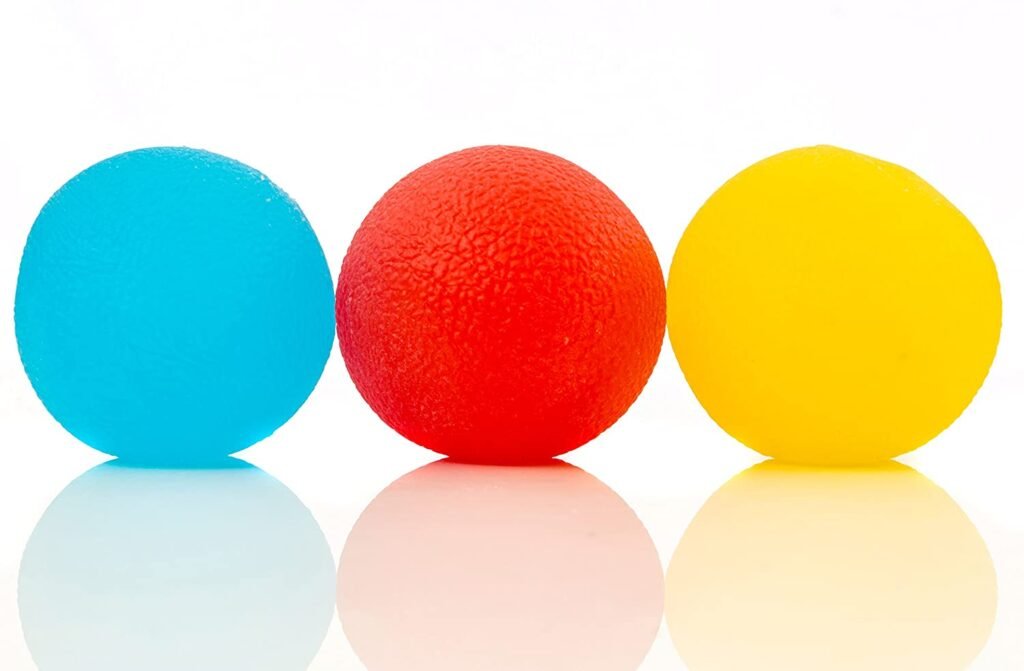In our fast-paced world, stress has become a common part of daily life, affecting individuals across all age groups. From deadlines and work pressures to personal responsibilities and unexpected challenges, managing stress is more important than ever. While there are countless methods to cope with tension, one simple yet effective tool has stood the test of time: stress relief balls. These compact, handheld items offer more than just a momentary distraction — they are grounded in psychological and physiological science that supports mental wellness.
Stress Relief Balls are small, pliable balls made from foam, rubber, gel, or silicone, designed to be squeezed repeatedly. They may look simple, but their benefits are well-documented. For individuals looking to incorporate effective stress-management tools into their daily lives, Stress Relief Balls provide a convenient and affordable option that blends tactile stimulation with emotional relief.
How Stress Relief Balls Work
The fundamental mechanism behind stress relief balls lies in the mind-body connection. Squeezing the ball activates the muscles in your hand and forearm, followed by a release. This repetitive action creates a physical rhythm that calms the nervous system and signals the brain to relax. In doing so, stress hormones such as cortisol are reduced, while endorphins—our natural feel-good chemicals—are elevated.
Additionally, focusing on the physical sensation of squeezing and releasing can help redirect attention away from anxious thoughts or overwhelming emotions. This mindfulness component plays a significant role in the effectiveness of stress relief balls, helping users stay grounded in the present moment.
Benefits for Mental Health and Emotional Regulation
1. Reduction of Anxiety and Tension
One of the most well-known benefits of stress relief balls is their ability to reduce anxiety. The act of squeezing a soft object helps release built-up energy and nervous tension. It provides a subtle but effective outlet for emotions and helps users maintain composure in high-pressure situations such as exams, interviews, or public speaking.
2. Improved Focus and Concentration
Fidgeting is often a sign of restlessness, especially among people with attention-related challenges such as ADHD. Stress relief balls can provide a quiet and productive way to channel that energy. Using a stress ball allows individuals to fidget in a controlled manner, which in turn can lead to improved focus and prolonged attention spans during work or study sessions.
3. Enhanced Mood and Relaxation
Frequent use of stress relief balls can contribute to a more relaxed emotional state. The tactile stimulation, paired with rhythmic hand movement, promotes deep breathing and muscle relaxation. Over time, this can lead to lower baseline stress levels, greater patience, and improved mood stability.
Physical Health Benefits
While primarily used for mental wellness, stress relief balls also offer physical health advantages. They support hand muscle strengthening, particularly beneficial for individuals recovering from injuries or those who perform repetitive hand tasks. Regular use improves blood circulation in the hands and fingers, which may reduce stiffness and discomfort, especially in those with arthritis or carpal tunnel syndrome.
Moreover, incorporating stress ball exercises into daily routines can aid in developing better hand-eye coordination and motor control. For aging adults, this kind of gentle physical engagement can contribute to maintaining dexterity and reducing age-related decline in motor skills.
Applications Across Different Environments
Stress relief balls are incredibly versatile, making them suitable for various settings:
-
Workplace: Employees often deal with deadlines, multitasking, and interpersonal stress. Keeping a stress ball at one’s desk can serve as a quick tool to decompress during a busy day.
-
Classrooms: Educators are increasingly using stress balls to help students—especially those with sensory needs—stay calm and attentive.
-
Therapy Clinics: Therapists and counselors recommend stress balls for clients dealing with trauma, anxiety, or behavioral disorders as a form of sensory regulation and emotional support.
-
At Home: Parents can introduce stress balls to children as a way to develop healthy coping strategies from a young age.
Choosing the Right Stress Relief Ball
Stress relief balls come in a variety of sizes, firmness levels, and materials. Some are filled with gel or sand for a more textured feel, while others are made from memory foam for a softer squeeze. The right choice often depends on the user’s age, strength, and sensory preferences. For example, a firmer ball might be more appropriate for hand strengthening, whereas a soft foam ball may be better for calming a child or elderly individual.
Integrating Stress Relief Balls into Daily Life
The key to reaping the full benefits of stress relief balls is consistency. Set aside a few minutes each day to use the ball during a break, while watching TV, or as part of a mindfulness routine. Over time, this simple act can help train the body and brain to respond to stress in healthier, more balanced ways.
Carrying a stress ball in your bag or keeping one at your workstation ensures that you always have a simple tool at your fingertips to manage stress effectively. Unlike more complex therapies or time-consuming techniques, stress balls offer immediate relief that’s accessible anytime, anywhere.
Conclusion
Stress relief balls are far more than just a novelty item. Backed by both science and real-world usage, they serve as a powerful tool for managing stress, anxiety, and emotional dysregulation. By activating the body’s natural calming response and improving focus, mood, and physical strength, these small objects deliver a wide array of benefits. Whether you’re facing a challenging workday or simply need a moment of calm, incorporating stress relief balls into your wellness toolkit is a practical and science-backed choice.
